- Home
- J. -H. Rosny aîné
The Navigators of Space
The Navigators of Space Read online
The Scientific Romances of
J.-H. Rosny Aîné
THE NAVIGATORS OF SPACE
And Other Alien Encounters
translated, annotated and introduced by
Brian Stableford
A Black Coat Press Book
Introduction
This is the first volume of a six-volume collection of stories by J.-H. Rosny Aîné (“the Elder”), which includes all of his scientific romances, plus a number of other stories that have some relevance to his work in that genre. Although the series includes a volume of prehistoric romances, it omits the prehistoric romance La Guerre du feu (tr. as The Quest for Fire) that is readily accessible in English translation.1 I have, however, made new translations of several scientific romances that have been previously translated, including “Les Xipéhuz” (tr. as “The Shapes” and “The Xipehuz”), “L’Autre monde” (tr. as “The Sixth Sense” and “Another World”), “Nymphée” (tr. as “The Warriors of the Waters”), “La Mort de la Terre” (tr. as “The Death of the Earth”), “La Grande énigme” (tr. as “The Great Enigma” and L’Etonnant voyage de Hareton Ironcastle (tr. as Ironcastle). I have done so in the interests of completeness rather than because the previous translations are unsatisfactory (although one or two of them are).
The contents of the six volumes are:
Volume 1. THE NAVIGATORS OF SPACE AND OTHER ALIEN ENCOUNTERS: The Xipehuz, The Skeptical Legend, Another World, The Death of the Earth, The Navigators of Space, The Astronauts.
Volume 2. THE WORLD OF THE VARIANTS AND OTHER STRANGE LANDS: Nymphaeum, The Depths of Kyamo, The Wonderful Cave Country, The Voyage, The Great Enigma, The Treasure in the Snow, The Boar Men, In the World of the Variants.
Volume 3. THE MYSTERIOUS FORCE AND OTHER ANOMALOUS PHENOMENA: The Cataclysm, The Mysterious Force, Hareton Ironcastle’s Amazing Adventure.
Volume 4. VAMIREH AND OTHER PREHISTORIC FANTASIES: Vamireh, Eyrimah, Nomaï.
Volume 5. THE GIVREUSE ENIGMA AND OTHER STORIES: Mary’s Garden, The Givreuse Enigma, Adventure in the Wild.
Volume 6. THE YOUNG VAMPIRE AND OTHER CAUTIONARY TALES: The Witch, The Young Vampire, The Supernatural Assassin, Companions of the Universe.
J.-H. Rosny Aîné is now generally reckoned to be one of the most important pioneers of French scientific romance, not necessarily second in rank to his much more popular and far more widely-known predecessor Jules Verne. Pierre Versins, in his definitive Encyclopédie de l’Utopie et de la Science-Fiction does not hesitate to describe him as France’s greatest “conjectural author” (Rosny was Belgian by birth but Parisian by calculated cultural affiliation), not excluding Verne. Jacques van Herp, in his introduction to an omnibus collection of Rosny’s scientific romances and related tales edited by Jean-Baptiste Baronian, states flatly that “Before Rosny, science fiction did not exist; all that existed was a related literature: anticipation” and, after characterizing that earlier (Vernian) literature as an assembly of tentative extrapolations of the contents of our own world, adds that: “With Rosny, fortunately, everything changed.”
Actually, van Herp’s judgment is wildly overestimated; any change wrought by Rosny’s early ventures into scientific romance certainly did not happen overnight, and was always weighed down by crippling difficulties. In his own day, Rosny’s scientific romances went virtually unnoticed at first, and it was not until they were belatedly identified as having a significant kinship with those of H. G. Wells that anyone thought them significant; because Rosny had written several of his key works before Wells made his debut, some French critics became keen to establish the priority of his work, just as they were keen to represent Wells as a follower in the footsteps of Jules Verne. Rosny, however—like Verne, and with equal justice—was quick to deny that the apparent kinship between his work and Wells’s was as close as these observers claimed. His protests went unheeded, and he was frequently labeled “the French H. G. Wells” thereafter, but that did not make it any easier for him to publish more work of a similar sort. In respect of the broad evolution of scientific romance as a genre he was a unique pioneer, whose imaginative reach was unprecedented, and has rarely been matched even by the relatively few writers who have undertaken to imitate or extrapolate aspects of his work, but he has never been popular, even among connoisseurs of speculative fiction. That is mainly because his best work was so very unusual, and usually lacking in certain traits guaranteed to encourage the affection of readers—but there is no doubt at all about his originality, or the imaginative quality of the contribution that he made to speculative fiction.
Seen in the context of his long life and prolific literary career, Rosny’s contribution to scientific romance was sketchy, problematic and puzzling—but in such a context, it is not necessarily a bad thing to be problematic or puzzling, and the sketchiness of his production was not his fault, being reflective of the intense hostility to speculative fiction that has always been obvious in the literary marketplace, and even more obvious in the chatter of conventional critical opinion. The translation of his work into English, although not entirely neglected, has—until now—been very patchy and rather fugitive, and this has made it very difficult for historians and critics of speculative fiction working in the English language (as the vast majority of them do) to assess his contribution accurately. Hopefully, this collection, and the accompanying commentary, will help to make that much easier.
J.-H. Rosny Aîné was the principal pseudonym used by Joseph-Henri-Honoré Boëx, who was born in Brussels in 1856. In the beginning, the pseudonym was simply J.-H. Rosny, but he decided after some years of near-fame to share that pseudonym with his younger brother, Séraphin-Justin-François (who preferred the name Justin), and it remained a joint enterprise for a decade and a half, until the two fell out and decided to separate; because both of them wanted to maintain the limited but significant prestige attached to the pseudonym, they divided it into two, becoming J.-H. Rosny Aîné (the elder) and J.-H. Rosny Jeune (the younger). (The two brothers had five other siblings, but none of the others are of any relevance to their writing career.)
“J.-H. Rosny” was neither the first nor the only pseudonym that Joseph Boëx used. During the most prolific period of his work for periodicals he is known to have sometimes signed himself “Henri de Noville,” and he signed some of his early books “Enacryos” before reprinting one of them under the Rosny name, but some of the other names he used have never been identified, so the whole scope of his work remains unknown. There is, however, no doubt that the vast majority of his most interesting work appeared, or was reprinted, under the J.-H. Rosny by-line. He never used his own name in the form that he had received it, although he did sign one non-fictional essay J.-H. Boëx-Borel, the second component of the surname being the maiden name of his second wife.
This set of circumstances has inevitably caused problems for critics, who have never been quite sure how best to refer to Joseph Boëx while discussing his life and work. Most critical and biographical articles settle for “Rosny,” in spite of the difficulties thus caused in specifying his young brother’s contribution to the name’s achievements, but Jean-Baptiste Baronian’s supplementary material in the Robert Laffont omnibus of Rosny’s romans préhistoriques dutifully refers to him as R.A., while designating his brother as R.J. Although that strategy is tempting, “R.A.” has too many alternative referents to be free of potential confusion, so I shall stick to “Rosny”—or, occasionally, “Joseph”—in spite of the inevitable contortions this will cause whenever the younger brother comes into the discussion. Fortunately, there is good reason to believe that the younger brother never made any contribution to any of the small number of prehistoric romances or scientific romances that appeared
while the two brothers were working in association.
Pierre Versins begins his article on the elder Rosny (his encyclopedia also includes a brief article on Rosny Jeune) with an anecdote about the young Joseph Boëx writing a Utopian essay at the age of 11 about a land of free children escaping the persecution of their parents, which allegedly annoyed the father after whom he had been named—but Rosny’s similarly-named father had, in fact, died when he was seven, so any annoyance must have been felt by his widowed mother, for whom bringing up seven children cannot have been easy. Young Joseph could hardly have known his father at all, but it may be worth noting that Joseph Boëx senior probably did not like his surname much, having inherited it from a mother who disowned him at birth—after refusing to name his father—leaving him to be brought up as a ward of the Belgian state.
Although Versins’ article and the chronology of Rosny’s life included in the Laffont omnibus both stress that Joseph junior began writing at an early age—Baronian’s chronology credits him with a collection of verse completed at the age of thirteen—and always looked upon it as something of a vocation, he took a long time to get his literary career off the ground, or even to attempt its launch. Indeed, he seems to have formed the opinion, even in his teens, that he needed a long period of education before he could move on to stage two of his life-plan—and also that he needed to plan his own curriculum rather than rely on the one provided by any existing institutional system. He left school at 15 to work in a bank, studying English in the evenings; Baronian records that he published a few articles in Belgian newspapers in 1872, but he did not attempt to build a career on those publications.
In 1875, Joseph took advantage of his English lessons to get a job in London, where he worked for a telegraph company, on the night shift, and continued his program of self-education by day. Baronian says that he published some work in English periodicals, but gives no details, and the pattern of the references contained in J.-H. Rosny’s subsequent publications strongly suggests that the bulk of his reading and writing was in French. His self-designed educational curriculum was very heavily biased toward sciences, ranging from physics and astronomy all the way through to newly-emergent social sciences like paleoanthropology.
Although he was not a man to say a great deal about himself, and might even be thought to have been deliberately secretive, Rosny did include some useful reflections on this period of his life in one of his two volumes of literary memoirs, Torches et lumignons [roughly, Bright Lights and Guttering Candles] (1921) and some further inferences can be gleaned from the most personal of his three early semi-autobiographical novels, Marc Fane (1888), which is a detailed account of the ambitious self-education program designed by the eponymous clerk in a telegraphy office, and the tribulations he experiences in carrying it through. In Torches et lumignons, Rosny explains that his passion for science was not only derived from his conviction that such knowledge was more valuable than that provided by a “traditional scientific education;” he states that: “I also remain incomprehensible if one forgets my extreme taste for metaphysics and science. For me, science is a poetic passion; it opens myriads of channels or openings into the universe; it never appears dead to me.”
Given this “poetic passion” and the other item of potential incomprehensibility to which the “also” in the above quotation refers back—Rosny describes himself as a complex and essentially contradictory personality, in which “realism is intimately and constantly mingled with the most chimerical idealism”—his self-education cannot have been quite as relentless and methodical as Marc Fane’s, but it was certainly patient and elaborate. His life-plan must, however, have been thrown slightly off track in 1880, when he married an Englishwoman, Gertrude Holmes. The family lived in London for a further five years—probably longer than he had originally intended to stay there—but Joseph paid increasingly frequent visits to Paris, where he intended to go once his embryonic literary career was ready for hatching out. Justin had already been there for some time, apparently waiting for him, when the older brother eventually relocated his still-growing family late in 1884.
Rosny begins Torches et lumignons with a description of his submission by hand, in the autumn of 1885, of what was to become his first-published novel, Nell Horn de l’Armée du Salut [Nell Horn of the Salvation Army] (1886), a revelatory study of the world of the London poor, written from occasionally-bitter experience. Although it is based on first hand observation, the central character is only loosely based on Gertrude Holmes, and the fates of the two women are contradictory; while Rosny married Gertrude, Nell’s French lover callously abandons her, leaving her with no alternative but to become a prostitute in order to support her illegitimate child. Gertrude presumably got a better bargain than Nell, but Rosny apparently came to feel that he had not done nearly as well as his hero; although it produced four children of whom Rosny claimed to have been fond, the marriage was direly unhappy, and eventually ended in divorce.
Although Nell Horn must have been recently finished when Rosny handed it over to Monsieur Giraud in the offices of the Nouvelle Librairie Parisienne, he had been working on it for years, alongside numerous other works. Like many aspiring writers, Rosny was far better at beginning projects than bringing them to conclusion, and had accumulated a vast store of fragmentary manuscripts and notes while living in London. In Torches et Lumignons he notes that in 1885, after arriving in Paris: “I retouched Les Xipéhuz, I finished my Livre étoilé, which did not see and will not see the daylight of publication; I assembled the multitudes of Le Bilateral, I jotted down Marc Fane and the lineaments of Daniel [Valgraive]; I lost myself in endless dreams of La Légende sceptique, I revised L’Immolation, I sketched out a romance of Cavernes.”
Assuming that this account can be taken seriously—and there is no reason to doubt the list of titles—it appears that at least four of Rosny’s first six published novels already existed in some form before he completed Nell Horn, together with drafts of four more works, two of which were never published. Significantly, in the context of the present project, the second group of four includes two of this key works of scientific romance—“Les Xipéhuz” (1887; tr. herein as “The Xipehuz”) and “La Légende sceptique” (1889; tr. herein as “The Skeptical legend”). Equally significantly, from the same viewpoint, the two that never reached publication also seem likely, to judge by their titles, to have been in that same genre. If, as seems probable, Cavernes was the source of the fragmentary story eventually published as “La contrée prodigieuse des cavernes” (1896; tr. in vol. 2 as “The Wonderful Cave Country”), that would suggest that some of Rosny’s later publications in the genre might have been written, or at least imagined, much earlier than their dates of publication.
Rosny was very keen to win friends and influence people once he had launched his literary career, and was ardently desirous of being accepted into Parisian literary society—partly, no doubt, because he understood the importance of networking in building a career, but mainly because he had such a great admiration for that society that he could imagine no greater reward than to be gladly welcomed into it. He sent a copy of Nell Horn to Emile Zola, hoping to win some praise for the novel’s extrapolation of the Naturalist credo that Zola had made famous, but the famously curmudgeonly Zola was dismissive. Rosny’s fortunes took a sudden and momentous turn for the better, however, when he sent another copy of the book to Zola’s great rival, Edmond de Goncourt, who was considered by many (not least himself) as the true founder and greater exponent of Naturalism.
Goncourt not only sent Rosny a letter expressing the praise that the younger writer craved, but also invited Rosny to visit him at his home. That meeting changed Rosny’s life; it is probably no exaggeration to say that if it had not been for Goncourt’s patronage, Rosny might have disappeared into oblivion after the publication of Nell Horn—which sold little more than a couple of hundred copies—and never published another book. Instead, Goncourt took the fledgling writer under his wing as a prot
égé, and introduced him to his weekly literary salon, generally known as the Grenier [loft], as a writer of great promise—a judgment that other people, including Albert Savine, the owner of the Nouvelle Librairie Parisienne, and the editors of several notable periodicals, took seriously.
Rosny was by no means the first young writer to have been favored in this way by Edmond de Goncourt—who seemed to some observers to have been desperately seeking a replacement for his younger brother, Jules, ever since the latter had died in 1870—but he was the last, retaining his position until Goncourt died in 1896. He seems to have replaced Goncourt’s former favorite, Jean Lorrain, virtually overnight, and he quickly became the central figure of an entourage of young writers who were standard fixtures at the Grenier and were regarded there as the up-and-coming generation of Naturalist writers. Although the others had all published material before Rosny published Nell Horn, his late start meant that he was a few years older than they were, and his accumulated store of manuscripts meant that he was able to make more rapid progress; those circumstances, combined with his assertive personality, quickly made him the brightest star in the constellation.
The other writers in Goncourt’s neo-Naturalist cadre of protégés included Paul Bonnetain, Lucien Descaves, Paul Margueritte and Gustave Guiches, with whom Rosny joined in a conspiracy directed against Zola, seemingly prompted by another member of the entourage, Gustave Geffroy. (Goncourt remained ostentatiously uninvolved and was never formally convicted of having masterminded the coup, although his loathing for Zola was well-known and it was widely suspected that he was the ultimate puppet-master of the plot.) The result of the conspiracy was the publication in the August 8 issue of the newspaper Le Figaro of an open letter to Zola which came to be known as Manifeste des Cinq: a new Naturalist manifesto that put the boot into Zola in no uncertain terms, accusing him of having vulgarized, devalued and debased that literary mode—holding up the recently-published La Terre (tr. as Earth) as a horrible example—and declaring the independence of their own Naturalist work.

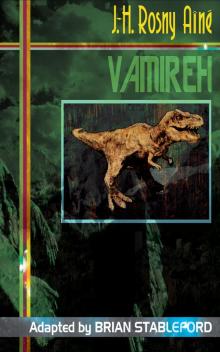 Vamireh
Vamireh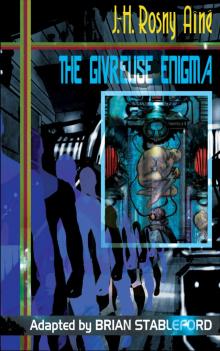 The Givreuse Enigma
The Givreuse Enigma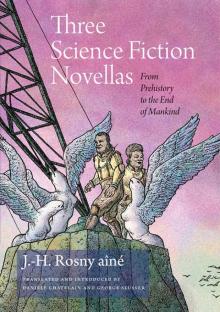 Three Science Fiction Novellas: From Prehistory to the End of Mankind
Three Science Fiction Novellas: From Prehistory to the End of Mankind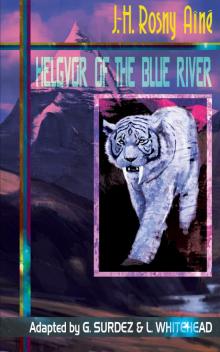 Helgvor of the Blue River
Helgvor of the Blue River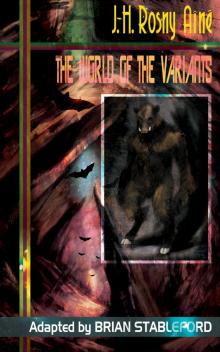 The World of the Variants
The World of the Variants Pan's Flute
Pan's Flute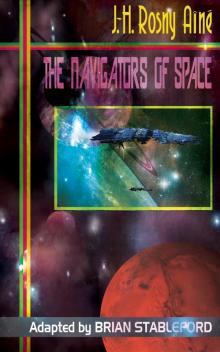 The Navigators of Space
The Navigators of Space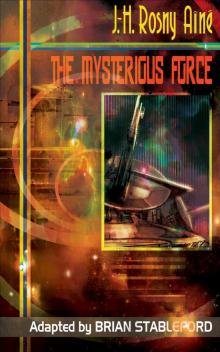 The Mysterious Force
The Mysterious Force